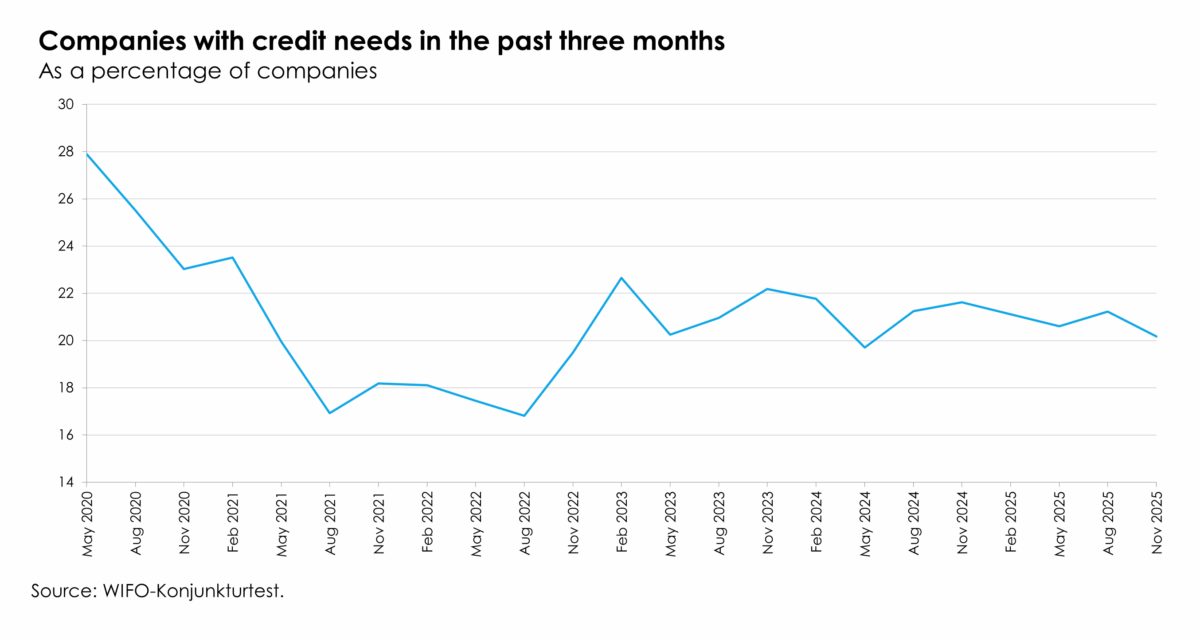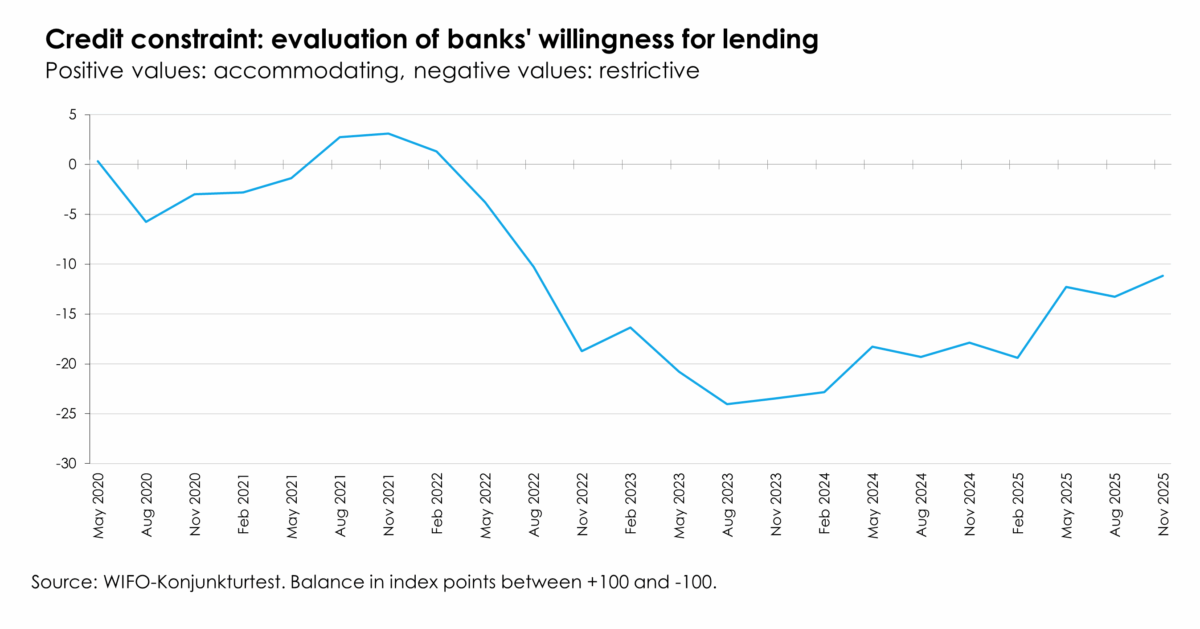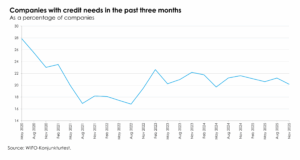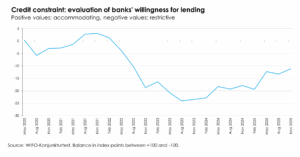WIFO-Konjunkturtest
Part of the Joint Harmonised EU Programme
of Business and Consumer Surveys
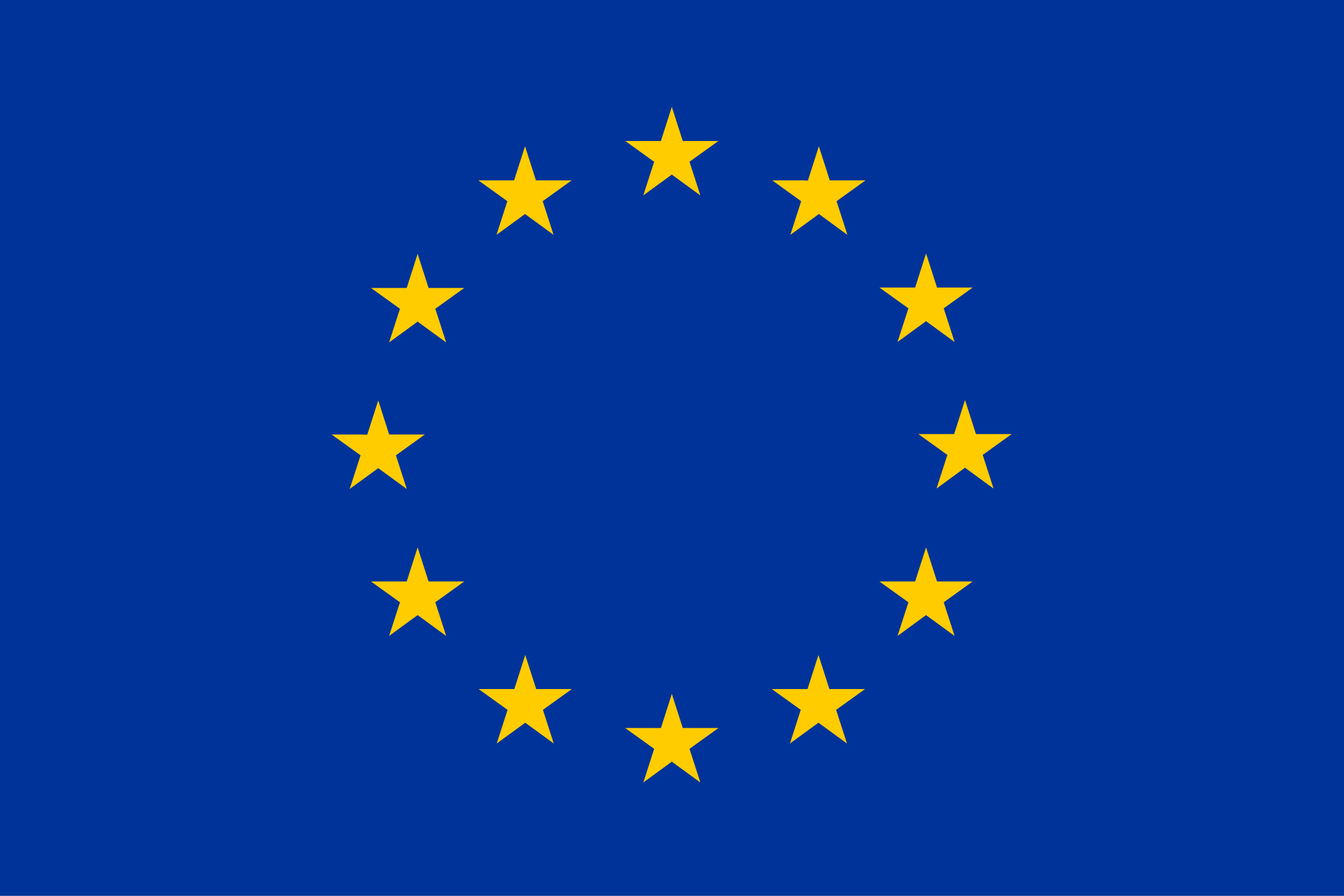
WIFO-Konjunkturtest
Part of the Joint Harmonised EU Programme
of Business and Consumer Surveys

WIFO-Konjunkturampel (economic traffic light)
The results of the WIFO economic survey for November show a slight improvement in business confidence. The WIFO economic climate index stood at –0.9 points (seasonally adjusted), 0.6 points above the October figure. Assessments of the current situation rose compared with the previous month (+0.9 points), but remained in the skeptical range at –1.3 points. Economic expectations remained virtually unchanged (+0.1 points) and stood at –0.3 points, close to zero. The cautious stabilization of economic sentiment continues. Economic assessments are improving in the construction industry (current situation and expectations) and in services (expectations). In industry, economic sentiment remains subdued despite an improvement in the current situation indices. In the retail sector, the indices are clouding over slightly.
Economic Sentiment Broadly Stable in the EU and the Euro Area; Employment Expectations Improve in Both Regions
In November 2025, the Economic Sentiment Indicator (ESI) remained broadly stable in both the EU and the euro area (both +0.2 points to 96.8 points and 97.0 points, respectively). The Employment Expectations Indicator (EEI) increased in both areas (EU: +1.1 points to 98.8 points, euro area: +0.8 points to 97.8 points). Both indicators continue to score below their long-term average of 100 points.
Credit Conditions of Austrian Companies
The credit questions of the WIFO-Konjunkturtest (business cycle survey) allow us to present the assessments and experiences of companies with regard to bank lending. The credit questions are asked quarterly in February, May, August and November.
In November 2025, companies' assessments of banks' willingness to lend – defined as the balance of the proportion of companies that describe banks' lending as accommodative (positive values) and the proportion of companies that describe bank lending as restrictive (negative values) – improved slightly compared with the previous quarter (+2.1 points), but remained in negative territory at –11.2 points. There are differences depending on company size: the credit hurdle is higher for smaller companies (fewer than 50 employees) (–14.6 points) than for medium-sized companies (50 to 250 employees: –4.6 points) and large companies (more than 250 employees: –8.7 points).
The survey results show a slight decline in credit demand (–1.1 percentage points compared with the previous quarter) with a value of 20.2% (long-term average: 20.8%) in aggregate (excluding retail). In manufacturing, credit demand remained above average (22.1% of companies reported credit demand), while in retail (20.5%) it fell slightly. Credit demand in the service sectors (19.4% of companies) and in construction (17.7%) was average or slightly below average. By company size (excluding retail), 18.9% of smaller companies (fewer than 50 employees) reported a need for credit, compared with 24.6% of medium-sized companies and 21.9% of larger companies (more than 250 employees).
Of the companies with credit needs (excluding retail), around 31.6% had to make concessions on the amount or terms (16.6% reported worse terms, 7.0% lower amounts and 8.0% worse terms and lower amounts than expected). This figure is slightly below the average for the past five years (32.6%). Around 42.1% of companies requiring credit were able to obtain it as expected (5-year average: 39.6%). At 26.7%, the proportion of companies requiring credit that did not receive credit or did not apply for it was slightly below average (5-year average: 27.8%; around 5.4% of all companies surveyed) was slightly below average because their loan application was rejected by the bank (5.5%), the terms were unacceptable (10.2%) or they had not attempted to obtain a loan because they had no chance of success (11.1%).
Credit Constraints and Credit Needs
Recent issues: WIFO-Konjunkturtest
Quarterly results of the WIFO-Konjunkturtests
Special issues: WIFO-Konjunkturtest
Recent issues: WIFO-Investitionsbefragung
Contact
For general enquiries, please contact konjunkturtest@wifo.ac.at.

